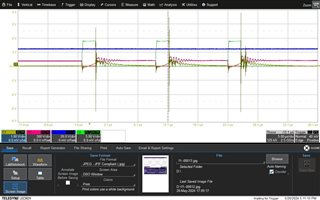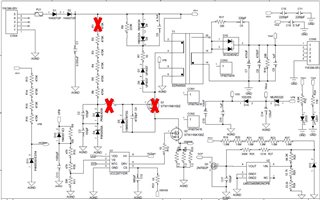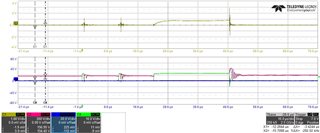Other Parts Discussed in Thread: TIDA-00173,
Hi, I always receive a lot of help.
I am referring to the document number TIDA-00173 and to create a higher capacity (approximately 100W) flyback.
I'm configuring a flyback using UCC28711. (Refer to document number TIDA-00173)
When pwm ic generating three initial pulses, I can observe momentary spikes in the value of CH1.(CH1: Vcs, CH2: VDS Q2, CH3:VDD, CH4:VGS)
(Datasheet specifies the rated value as 780mV, so i need to make it lower value. I think it can solve it using RC filter.)
To solve this problem, I changed the R23 resistor on the VCS pin from 1k to 4.6k, which resulted in higher peak values. But, in my opinion waveform is more than clear.
(1k is upper graph, 4.6k is down gragh)
I wonder if PWM ICs are affected by such momentary peak values? If they are, is it appropriate to continuously adjust the RC values like this?






